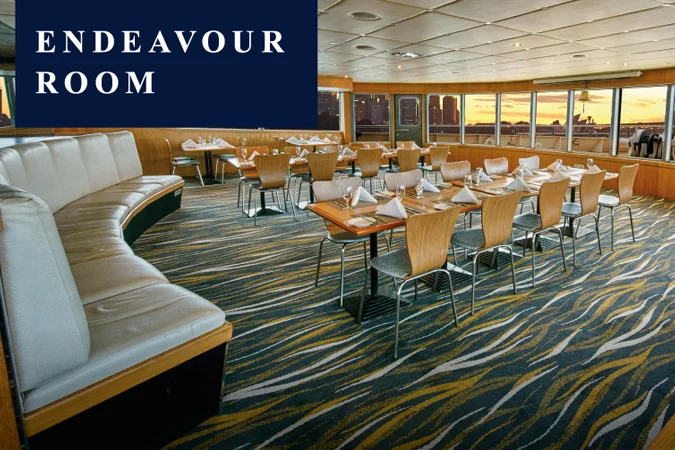Agenda
- 29 - 30 May 2024
- ICC Sydney

Sue Tomic
Chair
SCLAA
- Understanding the impact of global events on trade and supply chain resilience
- How government and industry can work together to build supply chain resilience
- Assessing the role of multilateral fora such as the WTO and APEC in supporting open and rules-based trade and creating balance in the region
- Introducing the Indo Pacific Economic Framework and its role in building robust and resilient supply chains

Elizabeth Ward
First Assistant Secretary, Trade Resilience Indo-Pacific Economic and Latin America Division & Ambassador for APEC
Department of Foreign Affairs and Trade
- Gaining insights from past crises like the pandemic and Suez Canal blockage to ready supply chains for major disruptions
- Discovering steps for cultivating an agile organisational culture equipped to respond effectively to challenges

Ruhul Moula
Head of Supply Chain – ANZ
Sanofi

Andrew Borg
Supply Chain Director
Mars Australia Food and Nutrition

Declan Briscoe
General Manager Operations
Medline Australia
- Understanding the difference between risk management and resilience
- How to calculate Time-to-Survive and Time-to-Recover and make decisions based upon the cost of each
- Exploring cost effective strategies to achieve resilience

Adam Mckinney
Director of Transportation
Walmart Logistics, US
*Virtual presentation

Geoffroy Henry
Founder and CEO
Ofload
Stream A

Sue Tomic
Chair
SCLAA
- What are the disruptors of supply chain?
- Using scenario planning to identify potential risks and their impacts on the supply chain
- Developing and implementing test response strategies for various scenarios to minimise disruption
- Evaluating the supply chain’s ability to adapt to sudden changes
- Updating scenarios regularly based on evolving risks and lessons learned

David Woods
Head of Planning Global Sunrice
SunRice
- Fostering transparent information sharing and joint contingency planning with partners
- Investing in supply chain mapping and monitoring tools to identify vulnerabilities
- Developing proactive risk management cultures focused on agility and redundancy

Cedric Lemetter
Chief Operations Officer
L’ORÉAL Australia & NZ
- Working with supply chain partners to develop and implement recovery plans
- Sharing real time information on disruptions for coordinated response efforts
- Combining resources with partners to expedite recovery and reduce costs
- Conducting joint reviews to learn from disruptions and strengthen future resilience
Panellists:

Julia Walker
Pacific Inbound Transport Leader – Global Supply Chain
Schneider Electric

Christel Martin
Director, Procurement Excellence
Transport NSW

Joshua Torrens
Director, Logistics & Equipment
NSW Rural Fire Service

Shane McCormack
Senior Manager Supply Chain
Cardinal Health
Stream B

Rakesh Bandipelli
Director
SCLAA
- Implementing lean principles to streamline operations, eliminate waste and maximise value to customers
- Creating continuous improvement frameworks like “Kaizen” to foster a culture of ongoing enhancement and efficiency

Evgeny Krapovnitskiy
Head of Supply Chain
InfraBuild
- Using customer feedback to identify areas for improvement and innovation within the supply chain
- Implementing agile methodologies to quickly adapt operations in response to customer needs and expectations

Ahmad Orya
Head of Supply Chain & Logistics
FreshFood
- Using historical data to predict future demand accurately
- Optimising stock levels to meet demand without overstocking
- Analysing supplier data to improve reliability and quality

Alberto Victor Miranda,
Head of Planning and Inventory
WHSmith
Stream C

Jethro Marks
Co-Founder and Co-Chief Executive Officer
The Nile
- Transitioning your fleet to electric or hybrid models to lower emissions
- Utilising AI-driven tools to streamline routes and reduce fuel consumption
- Invest in environmental projects to offset unavoidable emissions
- Implement energy-saving technologies in warehouses and distribution centres

Peter Callaughan
Director of Procurement, Warehousing & Logistics
Australian Government Department of Health and Aged Care
- Developing and track key performance indicators (KPIs) related to environmental, social and governance aspects
- Utilising established frameworks like GRI or CDP for consistent reporting
- Using sustainability reporting as a tool for ongoing performance enhancement
- Communicating sustainability achievements and challenges transparently to stakeholders, including investors, customers and the public
- Identifying areas within your supply chain that can benefit from renewable energy sources
- Buying green energy from renewable sources to power supply chain operations
- Invest in renewable fuel options for logistics and fleet operations
- Conduct regular audits to identify and implement energy saving measures

Philip Holliday
Chief Executive Officer and Director
Port Authority of New South Wales
- Sourcing from multiple regions to reduce dependency on a single areaRegularly assessing supplier performance and risk exposure
- Regularly assessing supplier performance and risk exposure
- Identifying and engaging alternative suppliers for critical components
- Working with suppliers on joint risk assessment and mitigation plans

Carlos Varela
Ecommerce Supply Chain Manager
Colgate-Palmolive
- Adapting to disruptions through redundancy and flexible responses
- Enhancing visibility through data sharing and technology
- Diversifying risks through partnerships and suppliers
- Stress testing vulnerabilities and improving agility

Jeremy Goodman
Director – Supply Chain
Carnival Australia
- Using sophisticated forecasting and replenishment algorithms to maintain optimal inventory levels
- Implementing RFID and barcode systems for accurate inventory tracking
- Streamlining picking and packing processes to improve order accuracy and customer satisfaction
- Balancing between just-in-time and just-in-case inventory management models
Panellists:

Riaz Haque
Demand and Supply Planning Manager
AstraZeneca

Chris Mousley
Demand Planner
GrainCorp

Mark Hopkins
Global Vice President -Professional Services
Netstock

Paty Perlott
Supply Chain Manager
True Protein
- Using ERP systems for a unified view of inventory across all locations
- Ensuring access to real-time inventory data from any location at any time
- Using mobile devices for on-the-floor inventory management and real-time data access
- Implementing dashboards for instant visibility into inventory metrics and KPIs

Allen Rashidi
Demand and Supply Planning Manager A&NZ Abbott Medical
- Using packaging materials that are easily recycled or composted
- Reducing material wastage through right size packaging optimisation
- Implementing systems for customers to return packaging for reuse
- Establishing comprehensive recycling and waste management programs within operations
- Prioritising suppliers with strong environmental and social governance (ESG) records
- Reducing carbon footprint by sourcing materials and products closer to the point of use
- Opting for materials that are renewable, recyclable or biodegradable
- Working with suppliers to improve their sustainability practices

Jorge Crossley
Head of Supply Chain Copper
AngloAmerican
Stream A

Sue Tomic
Chair
SCLAA
- What are the disruptors of supply chain?
- Using scenario planning to identify potential risks and their impacts on the supply chain
- Developing and implementing test response strategies for various scenarios to minimise disruption
- Evaluating the supply chain’s ability to adapt to sudden changes
- Updating scenarios regularly based on evolving risks and lessons learned

David Woods
Head of Planning Global Sunrice
SunRice
- Fostering transparent information sharing and joint contingency planning with partners
- Investing in supply chain mapping and monitoring tools to identify vulnerabilities
- Developing proactive risk management cultures focused on agility and redundancy

Cedric Lemetter
Chief Operations Officer
L’ORÉAL Australia & NZ
- Working with supply chain partners to develop and implement recovery plans
- Sharing real time information on disruptions for coordinated response efforts
- Combining resources with partners to expedite recovery and reduce costs
- Conducting joint reviews to learn from disruptions and strengthen future resilience

Julia Walker
Pacific Inbound Transport Leader – Global Supply Chain
Schneider Electric

Christel Martin
Director, Procurement Excellence
Transport NSW

Joshua Torrens
Director, Logistics & Equipment
NSW Rural Fire Service

Shane McCormack
Senior Manager Supply Chain
Cardinal Health
- Sourcing from multiple regions to reduce dependency on a single areaRegularly assessing supplier performance and risk exposure
- Regularly assessing supplier performance and risk exposure
- Identifying and engaging alternative suppliers for critical components
- Working with suppliers on joint risk assessment and mitigation plans

Carlos Varela
Ecommerce Supply Chain Manager
Colgate-Palmolive
- Adapting to disruptions through redundancy and flexible responses
- Enhancing visibility through data sharing and technology
- Diversifying risks through partnerships and suppliers
- Stress testing vulnerabilities and improving agility

Jeremy Goodman
Director – Supply Chain
Carnival Australia
Stream B

Rakesh Bandipelli
Director
SCLAA
- Implementing lean principles to streamline operations, eliminate waste and maximise value to customers
- Creating continuous improvement frameworks like “Kaizen” to foster a culture of ongoing enhancement and efficiency

Evgeny Krapovnitskiy
Head of Supply Chain
InfraBuild
- Using customer feedback to identify areas for improvement and innovation within the supply chain
- Implementing agile methodologies to quickly adapt operations in response to customer needs and expectations

Ahmad Orya
Head of Supply Chain & Logistics
FreshFood
- Using historical data to predict future demand accurately
- Optimising stock levels to meet demand without overstocking
- Analysing supplier data to improve reliability and quality

Alberto Victor Miranda,
Head of Planning and Inventory
WHSmith
- Using sophisticated forecasting and replenishment algorithms to maintain optimal inventory levels
- Implementing RFID and barcode systems for accurate inventory tracking
- Streamlining picking and packing processes to improve order accuracy and customer satisfaction
- Balancing between just-in-time and just-in-case inventory management models

Riaz Haque
Demand and Supply Planning Manager
AstraZeneca

Chris Mousley
Demand Planner
GrainCorp
Mark Hopkins
Global Vice President -Professional Services
Netstock
- Using ERP systems for a unified view of inventory across all locations
- Ensuring access to real-time inventory data from any location at any time
- Using mobile devices for on-the-floor inventory management and real-time data access
- Implementing dashboards for instant visibility into inventory metrics and KPIs

Allen Rashidi
Demand and Supply Planning Manager A&NZ Abbott Medical
Stream C

Jethro Marks
Co-Founder and Co-Chief Executive Officer
The Nile
- Transitioning your fleet to electric or hybrid models to lower emissions
- Utilising AI-driven tools to streamline routes and reduce fuel consumption
- Invest in environmental projects to offset unavoidable emissions
- Implement energy-saving technologies in warehouses and distribution centres

Peter Callaughan
Director of Procurement, Warehousing & Logistics
Australian Government Department of Health and Aged Care
- Developing and track key performance indicators (KPIs) related to environmental, social and governance aspects
- Utilising established frameworks like GRI or CDP for consistent reporting
- Using sustainability reporting as a tool for ongoing performance enhancement
- Communicating sustainability achievements and challenges transparently to stakeholders, including investors, customers and the public
- Identifying areas within your supply chain that can benefit from renewable energy sources
- Buying green energy from renewable sources to power supply chain operations
- Invest in renewable fuel options for logistics and fleet operations
- Conduct regular audits to identify and implement energy saving measures

Philip Holliday
Chief Executive Officer and Director
Port Authority of New South Wales
- Using packaging materials that are easily recycled or composted
- Reducing material wastage through right size packaging optimisation
- Implementing systems for customers to return packaging for reuse
- Establishing comprehensive recycling and waste management programs within operations
- Prioritising suppliers with strong environmental and social governance (ESG) records
- Reducing carbon footprint by sourcing materials and products closer to the point of use
- Opting for materials that are renewable, recyclable or biodegradable
- Working with suppliers to improve their sustainability practices

Jorge Crossley
Head of Supply Chain Copper
AngloAmerican
- Equipping employees with skills across multiple supply chain functions for increased flexibility
- Preparing staff to handle disruptions through simulated exercises
- Fostering leadership skills that prioritise resilience and adaptability
- Encouraging ongoing education and upskilling to adapt to new challenges

Fady Awad
Manager Fleet Supply Chain Delivery
Sydney Trains

Zeb Vermaak
Service Support Manager, Commercial and Supply Chain
Sydney Trains
- Examining best practices for proactively identifying and addressing supply chain workforce skill gaps
- Discovering how strategic partnerships can create sustainable talent pipelines
- Exploring ways organisations can foster cultures of continuous learning and upskilling
- Leveraging technologies and automation to address labor shortages while ensuring human capital utilisation
- Exploring the primary obstacles to achieving financial visibility
- Discussing innovative tools and technologies that can enhance financial transparency
- Sharing strategies for successfully integrating financial visibility solutions into existing systems
- Leveraging data analysis to pinpoint opportunities for reducing expenses
- Optimising shipping and transportation expenses through a reassessment of current ordering processes
- Engaging in negotiations with suppliers to lower costs and secure more favourable terms
- Preventing inventory shrinkage through meticulous planning and management of inventory levels

Cecilia Crosby
Head of Supply Chain
Qantas
- Engaging cross-functional partners in collaborative forecasting to aggregate complete and accurate market intelligence
- Optimising inventory and reducing stockouts by sharing forecast data across the supply chain
- Breaking down communication silos internally and externally to improve information flows

Amit Asthana
Associate Director, Devices Performance
Optus
- Discussing how enhanced financial visibility supports better strategic and operational decisions
- Exploring the impact of real time financial reporting on supply chain responsiveness
- Sharing strategies for using financial insights to manage supply chain risks more effectively
- Discussing how improved financial visibility can drive value creation across the supply chain

Amit Asthana
Group General Manager Procurement and Continuous Improvement
Perfection Fresh Australia

Amit Asthana
General Manager Supply Chain and Logistics
Fantastic Furniture
Stream A
- Leveraging logistics partnerships to alleviate bottlenecks and delays for more efficient delivery
- Implementing enhanced coordination strategies to optimise workflows between partners
- Utilising shared data and integrated platforms to enable transparency and joint decision making
- Leveraging automation and AI to improve productivity and resilience
- Harnessing predictive analytics and real-time visibility for smarter planning
- Streamlining processes through digital tools and lean principles
Panellists:

Peter Hodsdon
Head of Supply Chain Network and Solutions
Metcash

Usman Saeed
Regional Head of Operations
George Weston Foods

Shaun Percy
Head of Supply Chain & Operations
Coles

Talea Bader
Managing Director
SKUTOPIA
Stream B
- Leveraging drones and AVs to achieve faster, more flexible delivery for last mile logistics
- Improving supply chain reach to areas difficult for traditional vehicles
- Ways to lower your transportation costs through automation and optimised routes
- Reducing accidents and improving safety in warehouse operations and deliveries
- Explore the pressing challenges in supply chain planning, including disruption management, demand volatility, and resource allocation pressures.
- Discuss the evolving role of big data in supply chain management and how teams can harness it to solve complex logistical issues
- Examine how advancements in artificial intelligence are set to transform supply chain planning, focusing on both the potential benefits and associated risks.
- Outline practical steps for integrating AI technologies into business operations, including key strategies and essential building blocks for successful implementation.

Daniel Kohut
Vice President of Sales- Australia and New Zealand
Blue Yonder
- Exploring key technologies transforming modern supply chains
- Overcoming common barriers to technology adoption for supply chains
- Strategies and best practices for integrating new technologies into supply chain operations
- Preparing supply chain workforces for increasing automation and digitisation

Amit Asthana
Associate Director – Supply Chain & Portfolio Performance
Optus
- Minimising inventory holding times to reduce storage and handling costs
- Consider all factors affecting inventory costs, including ordering, holding and shortage costs to optimise decision-making

Udai Bakshi
Chief Operating Officer
Independent Living Specialist
- Overcoming key challenges in ensuring transportation reliability in the supply chain
- Leveraging emerging technologies and data analytics to improve transportation planning and execution
- Designing flexible transportation networks to mitigate disruption risks
- Improving collaboration with transportation providers and partners to improve capacity and reliability
Panellists:

Efe Zhao
ANZ Supply Chain Planning Manager
MSD Australia

Skye Reynolds
Head of Global Supply Chain
Acler

David Richmond
General Manager Strategy and Excellence – Global Supply Chain,
Fonterra – NZ
- How digitally enabled ports generate more value for suppliers and customers
- Examining challenges in port automation and identifying ways forward
- Building automation-ready capabilities by effectively utilising both internal and external data to improve ROI
- Discussing the benefits, limitations and differences between AGVs and AMRs and how to determine if they will work for you
- Examining their differences in choosing the right model for your facility
- How to safely integrate AGVs and AMRs into the warehouse
- Overcoming safety issues when using AGVs and AMRs in combination with manual labour
Stream A
- Leveraging logistics partnerships to alleviate bottlenecks and delays for more efficient delivery
- Implementing enhanced coordination strategies to optimise workflows between partners
- Utilising shared data and integrated platforms to enable transparency and joint decision making
- Leveraging automation and AI to improve productivity and resilience
- Harnessing predictive analytics and real-time visibility for smarter planning
- Streamlining processes through digital tools and lean principles
Panellists:

Peter Hodsdon
Head of Supply Chain Network and Solutions
Metcash

Usman Saeed
Regional Head of Operations
George Weston Foods

Shaun Percy
Head of Supply Chain & Operations
Coles

Talea Bader
Managing Director
SKUTOPIA
- Minimising inventory holding times to reduce storage and handling costs
- Consider all factors affecting inventory costs, including ordering, holding and shortage costs to optimise decision-making

Udai Bakshi
Chief Operating Officer
Independent Living Specialist
- Monitoring and analysing historical route data to enhance future route efficiency
- Leveraging on-road traffic knowledge in real-time to identify alternative routes
- Successfully integrating route optimisation tools with existing processes and systems
Stream B
- Leveraging drones and AVs to achieve faster, more flexible delivery for last mile logistics
- Improving supply chain reach to areas difficult for traditional vehicles
- Ways to lower your transportation costs through automation and optimised routes
- Reducing accidents and improving safety in warehouse operations and deliveries
- Explore the pressing challenges in supply chain planning, including disruption management, demand volatility, and resource allocation pressures.
- Discuss the evolving role of big data in supply chain management and how teams can harness it to solve complex logistical issues
- Examine how advancements in artificial intelligence are set to transform supply chain planning, focusing on both the potential benefits and associated risks.
- Outline practical steps for integrating AI technologies into business operations, including key strategies and essential building blocks for successful implementation.

Daniel Kohut
Vice President of Sales- Australia and New Zealand
Blue Yonder
- Exploring key technologies transforming modern supply chains
- Overcoming common barriers to technology adoption for supply chains
- Strategies and best practices for integrating new technologies into supply chain operations
- Preparing supply chain workforces for increasing automation and digitisation
- How digitally enabled ports generate more value for suppliers and customers
- Examining challenges in port automation and identifying ways forward
- Building automation-ready capabilities by effectively utilising both internal and external data to improve ROI
- Discussing the benefits, limitations and differences between AGVs and AMRs and how to determine if they will work for you
- Examining their differences in choosing the right model for your facility
- How to safely integrate AGVs and AMRs into the warehouse
- Overcoming safety issues when using AGVs and AMRs in combination with manual labour
- Exploring how technologies such as AI, blockchain and IoT are reshaping the future of supply chain
- Discussing the growing need for sustainable supply chain practices
- Examining the importance of building resilience supply chains to withstand future disruptions

Amy Bently
Executive General Manager, Logistics
CSR Ltd
- Using past experiences and disruptions as drivers for future change
- Developing a collaborative and creative culture with a growth mindset fit for continuous improvement
- Identifying the technology capabilities you need to enable a digital transformation and how to begin your transformation journey

Santiago Aon
Director Global Supply Chain
Fonterra – NZ
- Conference Day 1 29th May 2024
- Conference Day 2 30th May 2024

Sue Tomic
Chair
SCLAA
- Understanding the impact of global events on trade and supply chain resilience
- How government and industry can work together to build supply chain resilience
- Assessing the role of multilateral fora such as the WTO and APEC in supporting open and rules-based trade and creating balance in the region
- Introducing the Indo Pacific Economic Framework and its role in building robust and resilient supply chains

Elizabeth Ward
First Assistant Secretary, Trade Resilience Indo-Pacific Economic and Latin America Division & Ambassador for APEC
Department of Foreign Affairs and Trade
- Gaining insights from past crises like the pandemic and Suez Canal blockage to ready supply chains for major disruptions
- Discovering steps for cultivating an agile organisational culture equipped to respond effectively to challenges

Ruhul Moula
Head of Supply Chain – ANZ
Sanofi

Andrew Borg
Supply Chain Director
Mars Australia Food and Nutrition

Declan Briscoe
General Manager Operations
Medline Australia
- Understanding the difference between risk management and resilience
- How to calculate Time-to-Survive and Time-to-Recover and make decisions based upon the cost of each
- Exploring cost effective strategies to achieve resilience

Adam Mckinney
Director of Transportation
Walmart Logistics, US
*Virtual presentation

Geoffroy Henry
Founder and CEO
Ofload
Stream A

Sue Tomic
Chair
SCLAA
- What are the disruptors of supply chain?
- Using scenario planning to identify potential risks and their impacts on the supply chain
- Developing and implementing test response strategies for various scenarios to minimise disruption
- Evaluating the supply chain’s ability to adapt to sudden changes
- Updating scenarios regularly based on evolving risks and lessons learned

David Woods
Head of Planning Global Sunrice
SunRice
- Fostering transparent information sharing and joint contingency planning with partners
- Investing in supply chain mapping and monitoring tools to identify vulnerabilities
- Developing proactive risk management cultures focused on agility and redundancy

Cedric Lemetter
Chief Operations Officer
L’ORÉAL Australia & NZ
- Working with supply chain partners to develop and implement recovery plans
- Sharing real time information on disruptions for coordinated response efforts
- Combining resources with partners to expedite recovery and reduce costs
- Conducting joint reviews to learn from disruptions and strengthen future resilience
Panellists:

Julia Walker
Pacific Inbound Transport Leader – Global Supply Chain
Schneider Electric

Christel Martin
Director, Procurement Excellence
Transport NSW

Joshua Torrens
Director, Logistics & Equipment
NSW Rural Fire Service

Shane McCormack
Senior Manager Supply Chain
Cardinal Health
Stream B

Rakesh Bandipelli
Director
SCLAA
- Implementing lean principles to streamline operations, eliminate waste and maximise value to customers
- Creating continuous improvement frameworks like “Kaizen” to foster a culture of ongoing enhancement and efficiency

Evgeny Krapovnitskiy
Head of Supply Chain
InfraBuild
- Using customer feedback to identify areas for improvement and innovation within the supply chain
- Implementing agile methodologies to quickly adapt operations in response to customer needs and expectations

Ahmad Orya
Head of Supply Chain & Logistics
FreshFood
- Using historical data to predict future demand accurately
- Optimising stock levels to meet demand without overstocking
- Analysing supplier data to improve reliability and quality

Alberto Victor Miranda,
Head of Planning and Inventory
WHSmith
Stream C

Jethro Marks
Co-Founder and Co-Chief Executive Officer
The Nile
- Transitioning your fleet to electric or hybrid models to lower emissions
- Utilising AI-driven tools to streamline routes and reduce fuel consumption
- Invest in environmental projects to offset unavoidable emissions
- Implement energy-saving technologies in warehouses and distribution centres

Peter Callaughan
Director of Procurement, Warehousing & Logistics
Australian Government Department of Health and Aged Care
- Developing and track key performance indicators (KPIs) related to environmental, social and governance aspects
- Utilising established frameworks like GRI or CDP for consistent reporting
- Using sustainability reporting as a tool for ongoing performance enhancement
- Communicating sustainability achievements and challenges transparently to stakeholders, including investors, customers and the public
- Identifying areas within your supply chain that can benefit from renewable energy sources
- Buying green energy from renewable sources to power supply chain operations
- Invest in renewable fuel options for logistics and fleet operations
- Conduct regular audits to identify and implement energy saving measures

Philip Holliday
Chief Executive Officer and Director
Port Authority of New South Wales
- Sourcing from multiple regions to reduce dependency on a single areaRegularly assessing supplier performance and risk exposure
- Regularly assessing supplier performance and risk exposure
- Identifying and engaging alternative suppliers for critical components
- Working with suppliers on joint risk assessment and mitigation plans

Carlos Varela
Ecommerce Supply Chain Manager
Colgate-Palmolive
- Adapting to disruptions through redundancy and flexible responses
- Enhancing visibility through data sharing and technology
- Diversifying risks through partnerships and suppliers
- Stress testing vulnerabilities and improving agility

Jeremy Goodman
Director – Supply Chain
Carnival Australia
- Using sophisticated forecasting and replenishment algorithms to maintain optimal inventory levels
- Implementing RFID and barcode systems for accurate inventory tracking
- Streamlining picking and packing processes to improve order accuracy and customer satisfaction
- Balancing between just-in-time and just-in-case inventory management models
Panellists:

Riaz Haque
Demand and Supply Planning Manager
AstraZeneca

Chris Mousley
Demand Planner
GrainCorp

Mark Hopkins
Global Vice President -Professional Services
Netstock

Paty Perlott
Supply Chain Manager
True Protein
- Using ERP systems for a unified view of inventory across all locations
- Ensuring access to real-time inventory data from any location at any time
- Using mobile devices for on-the-floor inventory management and real-time data access
- Implementing dashboards for instant visibility into inventory metrics and KPIs

Allen Rashidi
Demand and Supply Planning Manager A&NZ Abbott Medical
- Using packaging materials that are easily recycled or composted
- Reducing material wastage through right size packaging optimisation
- Implementing systems for customers to return packaging for reuse
- Establishing comprehensive recycling and waste management programs within operations
- Prioritising suppliers with strong environmental and social governance (ESG) records
- Reducing carbon footprint by sourcing materials and products closer to the point of use
- Opting for materials that are renewable, recyclable or biodegradable
- Working with suppliers to improve their sustainability practices

Jorge Crossley
Head of Supply Chain Copper
AngloAmerican
Stream A

Sue Tomic
Chair
SCLAA
- What are the disruptors of supply chain?
- Using scenario planning to identify potential risks and their impacts on the supply chain
- Developing and implementing test response strategies for various scenarios to minimise disruption
- Evaluating the supply chain’s ability to adapt to sudden changes
- Updating scenarios regularly based on evolving risks and lessons learned

David Woods
Head of Planning Global Sunrice
SunRice
- Fostering transparent information sharing and joint contingency planning with partners
- Investing in supply chain mapping and monitoring tools to identify vulnerabilities
- Developing proactive risk management cultures focused on agility and redundancy

Cedric Lemetter
Chief Operations Officer
L’ORÉAL Australia & NZ
- Working with supply chain partners to develop and implement recovery plans
- Sharing real time information on disruptions for coordinated response efforts
- Combining resources with partners to expedite recovery and reduce costs
- Conducting joint reviews to learn from disruptions and strengthen future resilience

Julia Walker
Pacific Inbound Transport Leader – Global Supply Chain
Schneider Electric

Christel Martin
Director, Procurement Excellence
Transport NSW

Joshua Torrens
Director, Logistics & Equipment
NSW Rural Fire Service

Shane McCormack
Senior Manager Supply Chain
Cardinal Health
- Sourcing from multiple regions to reduce dependency on a single areaRegularly assessing supplier performance and risk exposure
- Regularly assessing supplier performance and risk exposure
- Identifying and engaging alternative suppliers for critical components
- Working with suppliers on joint risk assessment and mitigation plans

Carlos Varela
Ecommerce Supply Chain Manager
Colgate-Palmolive
- Adapting to disruptions through redundancy and flexible responses
- Enhancing visibility through data sharing and technology
- Diversifying risks through partnerships and suppliers
- Stress testing vulnerabilities and improving agility

Jeremy Goodman
Director – Supply Chain
Carnival Australia
Stream B

Rakesh Bandipelli
Director
SCLAA
- Implementing lean principles to streamline operations, eliminate waste and maximise value to customers
- Creating continuous improvement frameworks like “Kaizen” to foster a culture of ongoing enhancement and efficiency

Evgeny Krapovnitskiy
Head of Supply Chain
InfraBuild
- Using customer feedback to identify areas for improvement and innovation within the supply chain
- Implementing agile methodologies to quickly adapt operations in response to customer needs and expectations

Ahmad Orya
Head of Supply Chain & Logistics
FreshFood
- Using historical data to predict future demand accurately
- Optimising stock levels to meet demand without overstocking
- Analysing supplier data to improve reliability and quality

Alberto Victor Miranda,
Head of Planning and Inventory
WHSmith
- Using sophisticated forecasting and replenishment algorithms to maintain optimal inventory levels
- Implementing RFID and barcode systems for accurate inventory tracking
- Streamlining picking and packing processes to improve order accuracy and customer satisfaction
- Balancing between just-in-time and just-in-case inventory management models

Riaz Haque
Demand and Supply Planning Manager
AstraZeneca

Chris Mousley
Demand Planner
GrainCorp
Mark Hopkins
Global Vice President -Professional Services
Netstock
- Using ERP systems for a unified view of inventory across all locations
- Ensuring access to real-time inventory data from any location at any time
- Using mobile devices for on-the-floor inventory management and real-time data access
- Implementing dashboards for instant visibility into inventory metrics and KPIs

Allen Rashidi
Demand and Supply Planning Manager A&NZ Abbott Medical
Stream C

Jethro Marks
Co-Founder and Co-Chief Executive Officer
The Nile
- Transitioning your fleet to electric or hybrid models to lower emissions
- Utilising AI-driven tools to streamline routes and reduce fuel consumption
- Invest in environmental projects to offset unavoidable emissions
- Implement energy-saving technologies in warehouses and distribution centres

Peter Callaughan
Director of Procurement, Warehousing & Logistics
Australian Government Department of Health and Aged Care
- Developing and track key performance indicators (KPIs) related to environmental, social and governance aspects
- Utilising established frameworks like GRI or CDP for consistent reporting
- Using sustainability reporting as a tool for ongoing performance enhancement
- Communicating sustainability achievements and challenges transparently to stakeholders, including investors, customers and the public
- Identifying areas within your supply chain that can benefit from renewable energy sources
- Buying green energy from renewable sources to power supply chain operations
- Invest in renewable fuel options for logistics and fleet operations
- Conduct regular audits to identify and implement energy saving measures

Philip Holliday
Chief Executive Officer and Director
Port Authority of New South Wales
- Using packaging materials that are easily recycled or composted
- Reducing material wastage through right size packaging optimisation
- Implementing systems for customers to return packaging for reuse
- Establishing comprehensive recycling and waste management programs within operations
- Prioritising suppliers with strong environmental and social governance (ESG) records
- Reducing carbon footprint by sourcing materials and products closer to the point of use
- Opting for materials that are renewable, recyclable or biodegradable
- Working with suppliers to improve their sustainability practices

Jorge Crossley
Head of Supply Chain Copper
AngloAmerican
- Equipping employees with skills across multiple supply chain functions for increased flexibility
- Preparing staff to handle disruptions through simulated exercises
- Fostering leadership skills that prioritise resilience and adaptability
- Encouraging ongoing education and upskilling to adapt to new challenges

Fady Awad
Manager Fleet Supply Chain Delivery
Sydney Trains

Zeb Vermaak
Service Support Manager, Commercial and Supply Chain
Sydney Trains
- Examining best practices for proactively identifying and addressing supply chain workforce skill gaps
- Discovering how strategic partnerships can create sustainable talent pipelines
- Exploring ways organisations can foster cultures of continuous learning and upskilling
- Leveraging technologies and automation to address labor shortages while ensuring human capital utilisation
- Exploring the primary obstacles to achieving financial visibility
- Discussing innovative tools and technologies that can enhance financial transparency
- Sharing strategies for successfully integrating financial visibility solutions into existing systems
- Leveraging data analysis to pinpoint opportunities for reducing expenses
- Optimising shipping and transportation expenses through a reassessment of current ordering processes
- Engaging in negotiations with suppliers to lower costs and secure more favourable terms
- Preventing inventory shrinkage through meticulous planning and management of inventory levels

Cecilia Crosby
Head of Supply Chain
Qantas
- Engaging cross-functional partners in collaborative forecasting to aggregate complete and accurate market intelligence
- Optimising inventory and reducing stockouts by sharing forecast data across the supply chain
- Breaking down communication silos internally and externally to improve information flows

Amit Asthana
Associate Director, Devices Performance
Optus
- Discussing how enhanced financial visibility supports better strategic and operational decisions
- Exploring the impact of real time financial reporting on supply chain responsiveness
- Sharing strategies for using financial insights to manage supply chain risks more effectively
- Discussing how improved financial visibility can drive value creation across the supply chain

Amit Asthana
Group General Manager Procurement and Continuous Improvement
Perfection Fresh Australia

Amit Asthana
General Manager Supply Chain and Logistics
Fantastic Furniture
Stream A
- Leveraging logistics partnerships to alleviate bottlenecks and delays for more efficient delivery
- Implementing enhanced coordination strategies to optimise workflows between partners
- Utilising shared data and integrated platforms to enable transparency and joint decision making
- Leveraging automation and AI to improve productivity and resilience
- Harnessing predictive analytics and real-time visibility for smarter planning
- Streamlining processes through digital tools and lean principles
Panellists:

Peter Hodsdon
Head of Supply Chain Network and Solutions
Metcash

Usman Saeed
Regional Head of Operations
George Weston Foods

Shaun Percy
Head of Supply Chain & Operations
Coles

Talea Bader
Managing Director
SKUTOPIA
Stream B
- Leveraging drones and AVs to achieve faster, more flexible delivery for last mile logistics
- Improving supply chain reach to areas difficult for traditional vehicles
- Ways to lower your transportation costs through automation and optimised routes
- Reducing accidents and improving safety in warehouse operations and deliveries
- Explore the pressing challenges in supply chain planning, including disruption management, demand volatility, and resource allocation pressures.
- Discuss the evolving role of big data in supply chain management and how teams can harness it to solve complex logistical issues
- Examine how advancements in artificial intelligence are set to transform supply chain planning, focusing on both the potential benefits and associated risks.
- Outline practical steps for integrating AI technologies into business operations, including key strategies and essential building blocks for successful implementation.

Daniel Kohut
Vice President of Sales- Australia and New Zealand
Blue Yonder
- Exploring key technologies transforming modern supply chains
- Overcoming common barriers to technology adoption for supply chains
- Strategies and best practices for integrating new technologies into supply chain operations
- Preparing supply chain workforces for increasing automation and digitisation

Amit Asthana
Associate Director – Supply Chain & Portfolio Performance
Optus
- Minimising inventory holding times to reduce storage and handling costs
- Consider all factors affecting inventory costs, including ordering, holding and shortage costs to optimise decision-making

Udai Bakshi
Chief Operating Officer
Independent Living Specialist
- Overcoming key challenges in ensuring transportation reliability in the supply chain
- Leveraging emerging technologies and data analytics to improve transportation planning and execution
- Designing flexible transportation networks to mitigate disruption risks
- Improving collaboration with transportation providers and partners to improve capacity and reliability
Panellists:

Efe Zhao
ANZ Supply Chain Planning Manager
MSD Australia

Skye Reynolds
Head of Global Supply Chain
Acler

David Richmond
General Manager Strategy and Excellence – Global Supply Chain,
Fonterra – NZ
- How digitally enabled ports generate more value for suppliers and customers
- Examining challenges in port automation and identifying ways forward
- Building automation-ready capabilities by effectively utilising both internal and external data to improve ROI
- Discussing the benefits, limitations and differences between AGVs and AMRs and how to determine if they will work for you
- Examining their differences in choosing the right model for your facility
- How to safely integrate AGVs and AMRs into the warehouse
- Overcoming safety issues when using AGVs and AMRs in combination with manual labour
Stream A
- Leveraging logistics partnerships to alleviate bottlenecks and delays for more efficient delivery
- Implementing enhanced coordination strategies to optimise workflows between partners
- Utilising shared data and integrated platforms to enable transparency and joint decision making
- Leveraging automation and AI to improve productivity and resilience
- Harnessing predictive analytics and real-time visibility for smarter planning
- Streamlining processes through digital tools and lean principles
Panellists:

Peter Hodsdon
Head of Supply Chain Network and Solutions
Metcash

Usman Saeed
Regional Head of Operations
George Weston Foods

Shaun Percy
Head of Supply Chain & Operations
Coles

Talea Bader
Managing Director
SKUTOPIA
- Minimising inventory holding times to reduce storage and handling costs
- Consider all factors affecting inventory costs, including ordering, holding and shortage costs to optimise decision-making

Udai Bakshi
Chief Operating Officer
Independent Living Specialist
- Monitoring and analysing historical route data to enhance future route efficiency
- Leveraging on-road traffic knowledge in real-time to identify alternative routes
- Successfully integrating route optimisation tools with existing processes and systems
Stream B
- Leveraging drones and AVs to achieve faster, more flexible delivery for last mile logistics
- Improving supply chain reach to areas difficult for traditional vehicles
- Ways to lower your transportation costs through automation and optimised routes
- Reducing accidents and improving safety in warehouse operations and deliveries
- Explore the pressing challenges in supply chain planning, including disruption management, demand volatility, and resource allocation pressures.
- Discuss the evolving role of big data in supply chain management and how teams can harness it to solve complex logistical issues
- Examine how advancements in artificial intelligence are set to transform supply chain planning, focusing on both the potential benefits and associated risks.
- Outline practical steps for integrating AI technologies into business operations, including key strategies and essential building blocks for successful implementation.

Daniel Kohut
Vice President of Sales- Australia and New Zealand
Blue Yonder
- Exploring key technologies transforming modern supply chains
- Overcoming common barriers to technology adoption for supply chains
- Strategies and best practices for integrating new technologies into supply chain operations
- Preparing supply chain workforces for increasing automation and digitisation
- How digitally enabled ports generate more value for suppliers and customers
- Examining challenges in port automation and identifying ways forward
- Building automation-ready capabilities by effectively utilising both internal and external data to improve ROI
- Discussing the benefits, limitations and differences between AGVs and AMRs and how to determine if they will work for you
- Examining their differences in choosing the right model for your facility
- How to safely integrate AGVs and AMRs into the warehouse
- Overcoming safety issues when using AGVs and AMRs in combination with manual labour
- Exploring how technologies such as AI, blockchain and IoT are reshaping the future of supply chain
- Discussing the growing need for sustainable supply chain practices
- Examining the importance of building resilience supply chains to withstand future disruptions

Amy Bently
Executive General Manager, Logistics
CSR Ltd
- Using past experiences and disruptions as drivers for future change
- Developing a collaborative and creative culture with a growth mindset fit for continuous improvement
- Identifying the technology capabilities you need to enable a digital transformation and how to begin your transformation journey

Santiago Aon
Director Global Supply Chain
Fonterra – NZ
Tickets
Conference Only
Standard rates- Access to the 2 main conference days
- Onsite discussion forums
- Access to the VIP networking drinks reception on Day 1
- Session recordings and presentation slides
Solutions Provider
Rates
(with subject to availability) - Access to the 2 main conference days
- Virtual Q & A
- Onsite discussion forums
- Session recordings and presentation slides





